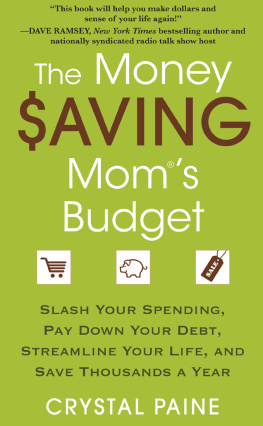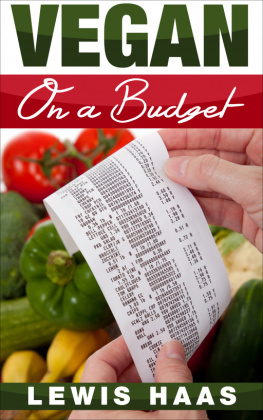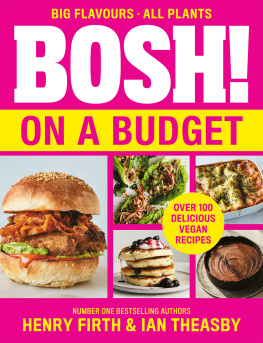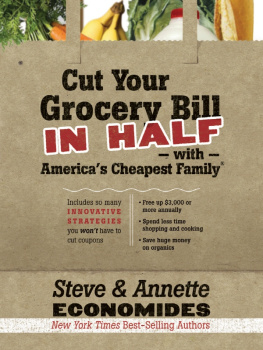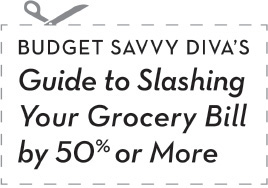
Secret Tricks & Clever Tips
for Eating Great & Saving Money
SARA LUNDBERG

Copyright text 2013 by Sara Lundberg. Copyright concept and design 2013 by Ulysses Press and its licensors. All Rights Reserved. Any unauthorized duplication in whole or in part or dissemination of this edition by any means (including but not limited to photocopying, electronic bulletin boards, and the Internet) will be prosecuted to the fullest extent of the law.
Published by
Ulysses Press
P.O. Box 3440
Berkeley, CA 94703
www.ulyssespress.com
ISBN: 978-1-61243-152-9
Library of Congress Catalog Number 2012951886
10 9 8 7 6 5 4 3 2 1
Acquisitions Editor: Kelly Reed
Managing Editor: Claire Chun
Editor: Jessica Benner
Proofreader: Lauren Harrison
Cover design: what!design @ whatweb.com
Interior design and layout: Rebecca Lown
Artwork: BudgetSavvyDiva.com woman logo BudgetSavvyDiva.com/Kei Phillips, shopping cart Patricia Burke/istockphoto.com
IMPORTANT NOTE TO READERS: Trademarks of restaurants and food brands mentioned in this book are used for informational purposes only. No sponsorship or endorsement by, or affiliation with, the trademark owners is claimed or suggested by the author or publisher.
Contents
One of my earliest memories is making pizzas on English muffins in the kitchen with my dad. This is just one of many childhood recollections that revolve around cooking with my family.
The importance of a home-cooked dinnerand more important, sitting down to the mealwas instilled in me from a very young age.
My mom showed me how the lemons from the tree in our front yard could be used to keep a chicken moist. Both my parents taught me the importance of having herb and vegetable gardens. I was able to develop not only a green thumb but also how a little rosemary can add something special to a dish.
It was another family member, my grandfather, raised during the Depression, who instilled in me the importance of a dollar. He taught me to think about each purchase I make, because what you need and what you want may be two different things. As I grew, I figured out how to save money while still living a full lifeespecially in the kitchen. This is the concept that this book is based on: saving money on groceries is easy if you know the right tips and tricks.
The book is full of information that you can use right away! Even if you dont have room to stockpile canned goods or a grocer that does Double Coupon Day, the Budget Savvy Diva is always helping you find ways to save money while still enjoying a luxurious dinner. The keys are learning to think differently about grocery shopping and a few easy, frugal recipes that anyone can make.
Its no secret that one of the best ways to save money (and time!) in the kitchen is smart menu planning.
Deciding what you feel like eating just before dinner is a luxury that could cost you dearly if you shop at the last minute, or worse, order takeout or head to a restaurant.
Planning for your weeks meals allows you to take your inventoryas well as great deals at the supermarketinto account. It even provides a unique opportunity to evaluate your familys daily nutrition and improve your diet.
Proper meal planning saves money by reducing gas mileage with fewer trips to the grocery store, as well as reduced impulse spending when you get there. You also have the opportunity to make meals in bulk, which often means less spent on per-unit costs and more gained in leftovers, aka free meals. Meal planning means you are in control when you shop.
When you buy only what you know you will use, you dont just save money, but time. No more searching your cupboards in a race to mix and match ingredients for some half-baked dinner catastrophe. You can cancel the emergency runs for forgotten items, especially when bulk buying has provided you with a nifty stockpile. Those large dishes for planned leftovers save on cooking and prep time, virtually giving you a night or two off every week.
Planning your weekly meals is easy when you know the basics, and soon youll be saving time and money while creating menus with care, giving you and your family the nutritional value you deserve on a fast-food budget. You dont have to spend a lot to be healthy; you just have to plan ahead. Ill show you how.
Planning a Day Ahead
The first thing to do is to commit to planning your menus. Everybody likes the idea of menu planning, but its far too easy to put off, waiting for that magical moment when we are much more organized and have the leisure time to sit down and work it out. The truth is that making a menu will save you time in the end (and possibly make you feel like youre just a little more organized). If youre new to menu planning, there are some easy ways to get started. One of my suggested methods requires only that you plan each meal the night before. This plan has the most flexibility, but doesnt take much strain off of shopping time or the budget. Still, its a big step toward familiarizing yourself with your own pantry and will help you focus on buying only what you need.
First, lets break down what goes onto your plate. Youll want to have a protein, a starch, and a vegetable or fruit side. The protein ranges from the traditional beef, poultry, fish, or pork to beans and tofu. Pasta, rice, and potatoes are some typical go-to starches, and salad, veggies, or fruit are recommended to round out a healthy meal. Breads, such as rolls and biscuits, are optional, as are desserts. You can make dessert healthy by having fruit instead of something sugary or high in fat. Try to avoid completely new meals when you first get started with meal planning. Instead, incorporate new foods in with familiar ones to avoid a negative reaction from others in your household.
Start by making a list of meals that youve made in the past or that youve been wanting to try out. Think of casseroles (which are great for making ahead and even freezing) and dishes that call for money-saving ingredients like ground beef and chicken. Take your time and plan carefullyyoull be glad you did. If your list seems too short, dont worry, youll be able to add to it as you discover more recipes. Once youve got a list going, scan through it and check the dishes that are the most budget-friendly. These select meals will be a master list that you can use for easy reference in the future.
As you plan your meals, make sure to get the input of the rest of your household. Its always a bad idea to buy food that you know wont get eaten. Dont waste your money.
Planning a night before is easy: just take a few minutes to look at what you have on hand and think about what you can make with those items. Check the fridge thoroughly for food that will soon expire, and investigate your pantry and cabinets well. Start with fresh produce and dairy and work to the dry grains and canned food. It will take some getting used to, but over time, you will be able to whip something up from nearly bare cupboards like a pro.
Planning a Whole Week
Thinking about meals a day ahead is very helpful and reduces costs by removing impulse buys and fast food from the equation, but doing it every day may get tiresome. Luckily, once youve got the hang of planning a day in advance, its easy to take the next step to outlining a weeks worth of meals in one planning session.
Next page


